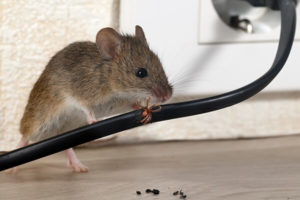What Is IPM?
IPM is simply an abbreviation that stands for Integrated Pest Management. This process involves sound solutions and common sense for pest treatment and control in your business. These solutions involve three steps:
- Inspection of your facility
- Identification of specific pests
- Treatment for pests
The options for treatment include removing water and food sources, sealing cracks and treating with pesticides if necessary.
Your professional pest control company will implement a program with IPM in your business facility. The use of an IPM program will help in protecting your business against quality of life, property and health threats posed by pests.
IPM for Business Customers
Your business facility is a tremendous investment. It provides you with your livelihood. Your customers and clients are the lifeblood of your business, and you need to have a positive reputation in order to increase your revenue.
Rodents or pests in your facility may affect how your customers view your company, and you. In addition, rodents and pests may pose serious health risks to your employees, and create unsafe conditions on your property. Pests are not large in stature, but they certainly affect your bottom line in a big way.
A Complete Approach to Pest Control
IPM is a more complete approach to commercial pest control that takes your unique business needs into consideration. Professionals in pest control do not treat all facilities in the same way. Whether they are removing water or food sources, sealing cracks of using pesticides if needed, IPM is all about determining the most comprehensive and effective treatment for your company’s pest problems.
Why Use IPM?
IPM is environmentally sensitive and effective in managing pests. It relies on common-sense practices to treat pest problems. IPM uses comprehensive, current information on pest life cycles and on the way pests interact with a given environment. The best methods of pest control are used to manage pests in the most effective ways, and with the least threat to people, the facility and the environment.
IPM programs use all available options for pest management, including judicious pesticide use, only when needed. IPM limits pesticide use to products that have been sourced naturally, instead of synthetically designed chemicals.
How Will an IPM Program Work?
IPM is not just one method of pest control. Instead, it involves a series of evaluations of the environment, decisions on treatment and controls to keep out further infestations.
Before treating for pests, certified pest management specialists set a threshold for action, at which point some pest control action is needed. Seeing one pest is not always indicative of a need for control. The level where pests become economic threats is integral for the guidance of future decisions about pest controls.
Pests are identified and monitored in an IPM program. Not every insect or other organism requires pest control. Some are, at best, innocuous. IPM depends on the proper identification and monitoring of pests. In this way, appropriate decisions can be made for controlling the pests. Identification and monitoring remove the chance that pesticides are used if they are not actually needed, or that the wrong type of pesticide is used.
Prevention is an Important Part of IPM Programs
 IPM manages indoor and outdoor spaces so that pests do not become a threat. Once the identification, monitoring and action thresholds have indicated that pest control is needed, and preventive methods have proved ineffective, an IPM program will evaluate a proper method of control, taking into account its risk and effectiveness.
IPM manages indoor and outdoor spaces so that pests do not become a threat. Once the identification, monitoring and action thresholds have indicated that pest control is needed, and preventive methods have proved ineffective, an IPM program will evaluate a proper method of control, taking into account its risk and effectiveness.
Pest controls that are effective, with less risk incurred, will be selected first. This includes targeted chemicals like pheromones that will disrupt mating, and mechanical controls, like trapping. If the pests are still not under control, pest control methods like pesticides will be used as a last resort.
Call Dugas Pest Control today to schedule a free inspection and estimate.

 Termites are more common than you may realize, although they are not easily detected. That’s why it’s vital for homeowners to get termite inspections from a reputable professional. An inspection will ensure that your home remains termite-free.
Termites are more common than you may realize, although they are not easily detected. That’s why it’s vital for homeowners to get termite inspections from a reputable professional. An inspection will ensure that your home remains termite-free. How Is Dugas Commercial Pest Management different from other commercial pest management programs?
How Is Dugas Commercial Pest Management different from other commercial pest management programs? How do you guarantee your services?
How do you guarantee your services? Every parent knows that sending their kid to school means exposing them to colds, the flu, lice, and much more. That just seems to be a part of growing up.
Every parent knows that sending their kid to school means exposing them to colds, the flu, lice, and much more. That just seems to be a part of growing up. Although they don’t fly and can’t jump, bed bugs are still able to crawl very quickly. Adding to their elusiveness is the fact that they only come out at night and, during the day, take to cracks and crevices wherever they can find them.
Although they don’t fly and can’t jump, bed bugs are still able to crawl very quickly. Adding to their elusiveness is the fact that they only come out at night and, during the day, take to cracks and crevices wherever they can find them. They are a big problem this year and you may not even know you brought them home until they have settled in your house. This is especially true if you are traveling to one of the cities listed on the CBS Worst Cities for Bed Bugs list – which include New York, Philadelphia and Detroit as the 3 worst places!
They are a big problem this year and you may not even know you brought them home until they have settled in your house. This is especially true if you are traveling to one of the cities listed on the CBS Worst Cities for Bed Bugs list – which include New York, Philadelphia and Detroit as the 3 worst places! There is something of a misperception that bedbugs only infest “dirty” houses or come from “dirty” hotel rooms or movie theaters.
There is something of a misperception that bedbugs only infest “dirty” houses or come from “dirty” hotel rooms or movie theaters.
